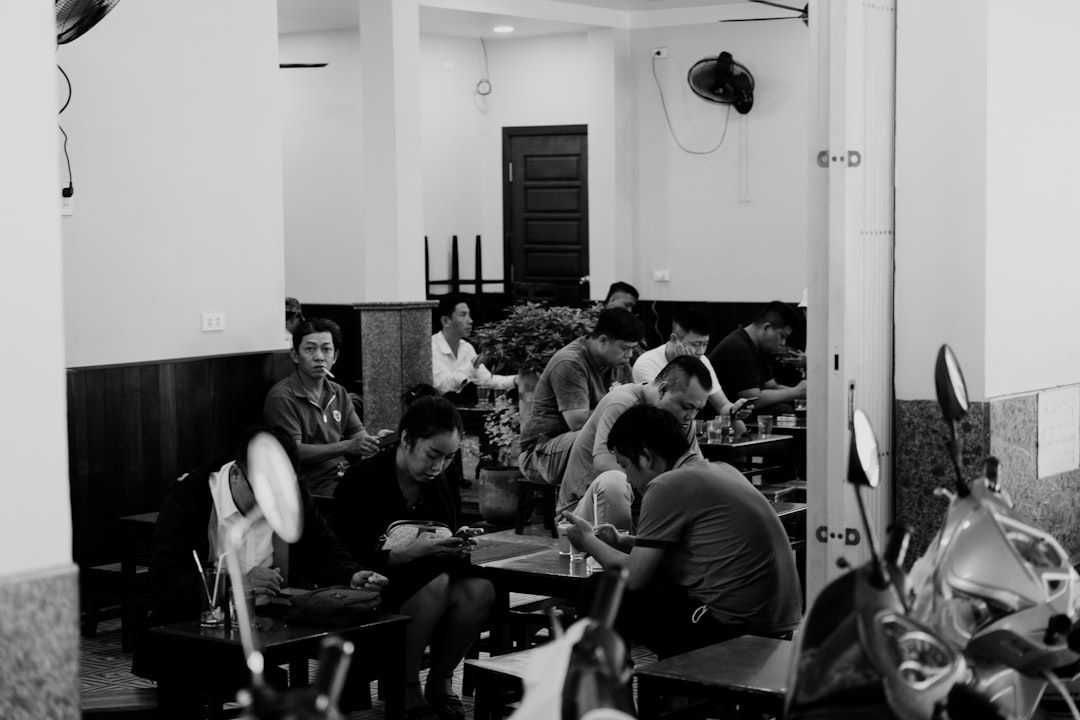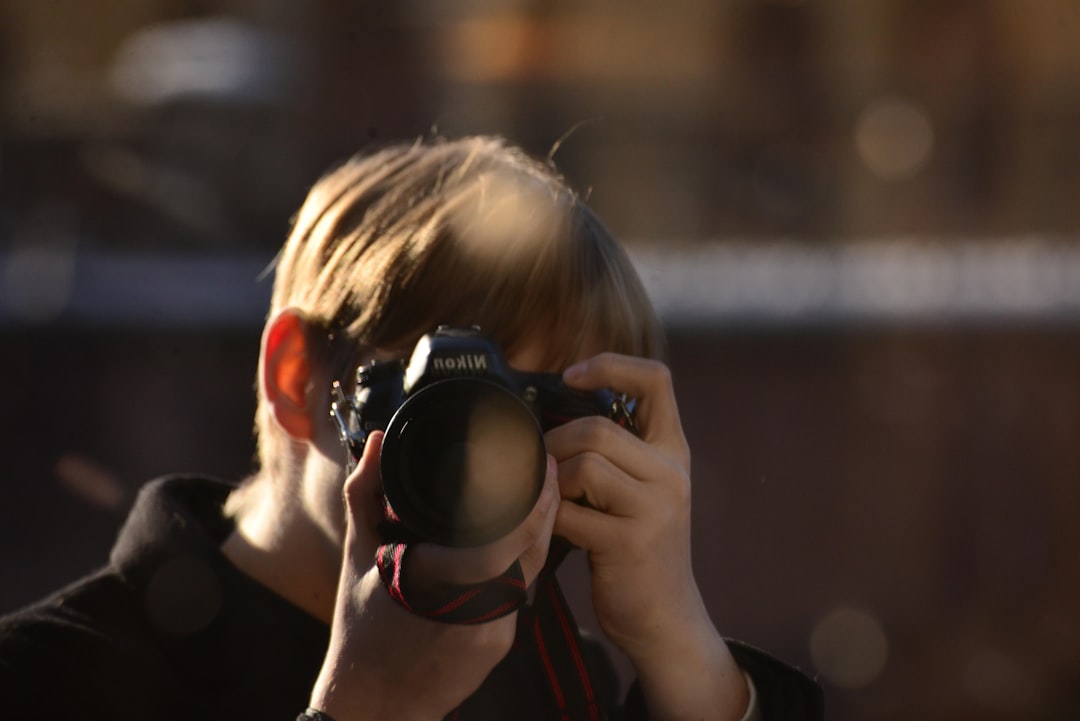

Engage prospects with a scan and streamline customer engagement with FREE QR code marketing tools by Sona – no strings attached!
Create a Free QR CodeFree consultation

No commitment

Engage prospects with a scan and streamline customer engagement with FREE QR code marketing tools by Sona – no strings attached!
Create a Free QR CodeFree consultation

No commitment
Today's competitive landscape for photography schools requires more than just exceptional educational experiences. Rapid digital transformation and rising student expectations drive institutions to find innovative ways to engage, understand, and serve learners more effectively. Real-time feedback has become essential to refining curriculum and workshops, showcasing responsiveness, and strengthening a school’s reputation.
Traditional feedback collection methods such as paper forms, emails, and in-person surveys are often manual, slow, and prone to low response rates. These analog workflows can be especially frustrating when valuable student insights go unheard, resulting in missed opportunities to address needs promptly or improve the learning experience. The challenge of feedback anonymity makes it difficult to identify which groups or cohorts require the most attention.
QR codes offer a transformative solution to these challenges. With a simple scan, schools can seamlessly connect in-person and virtual experiences, instantly drive students to feedback forms or surveys, and automate data collection right at the point of engagement. Strategic QR code campaigns enable efficient feedback capture, improved participation, and the ability to use real-time insights to elevate every aspect of photography education.

Photography schools succeed when instruction aligns with student needs and creative goals. QR codes help bridge everyday campus interactions with fast, focused feedback collection so instructors, program leads, and administrators can act swiftly. By embedding QR codes at key touchpoints in studios, classrooms, galleries, and events, you reduce friction that typically suppresses response rates and delay insights.
The transition away from analog processes is straightforward. Replace printed evaluation sheets, manual sign-in logs, and email-only surveys with scannable codes that open mobile forms in seconds. This shift not only saves time, it also reduces errors, standardizes collection, and ensures every cohort and session is measured. With dynamic QR platforms like Sona QR, you can update destinations without reprinting assets, track performance, and sync data to CRM or analytics tools for deeper reporting. Start creating QR codes for free.
This workflow supports richer, faster feedback while increasing response rates and streamlining analysis. It turns every in-person encounter into an opportunity for genuine improvement, helping schools demonstrate their responsiveness and commitment to student success.

Photography instruction is inherently tactile and in-person, yet the outcomes many schools care about depend on measurable digital interactions such as evaluations, testimonials, and follow-up interest. Without a reliable way to connect studio activity, critiques, and events to online actions, valuable feedback remains fragmented or lost. QR codes solve this connection problem by offering a one-scan pathway from physical experiences to digital forms, resources, and analytics.
When students can provide feedback immediately, the insights are fresher and more specific. That immediacy also helps schools detect patterns quickly, whether it is a new lighting module that needs reworking or a guest lecture series that merits expansion. As programs evolve with new courses, instructors, and exhibitions, dynamic QR codes keep content current, while analytics reveal where engagement is strong and where it needs attention.
QR codes can live on classroom doors, critique session handouts, portfolios, campus signage, and exhibition placards. Placing them at the exact moment of experience creates a natural bridge to feedback, while building the data foundation needed to improve instruction and student satisfaction. For gallery contexts, see how exhibition placards turn visitors into active participants.
QR code formats vary by purpose. For feedback in photography schools, choose formats that minimize friction and support your data goals. Static codes are fine for unchanging content, while dynamic codes let you track and update links over time.
For photography schools, forms and dynamic codes often deliver the highest value. Workshops, critiques, and exhibitions change frequently, and dynamic links help teams adapt without reprinting. Meanwhile, connecting a form directly limits steps and maximizes completion on mobile devices.

The most effective QR feedback programs meet students where they already are. Every physical or visual touchpoint in a photography school can become a gateway to insight. The key is to capture sentiment at the moment of experience so responses are candid and specific, then route those insights to systems that support action.
Map your student journey across the semester and mark where emotions run high. Think of first-day orientation, portfolio reviews, equipment checkouts, studio critiques, and final exhibitions. These are prime moments to invite input. A mix of permanent codes for recurring checkpoints and event-specific codes for limited runs can ensure robust coverage.
By covering both visible and overlooked feedback points, schools reduce blind spots. Capturing insights across modalities also helps differentiate short-term reactions from sustained trends, which is critical for long-term curriculum design.

A fragmented survey process leads to incomplete pictures of student experience. With QR codes, schools can standardize feedback workflows across common academic and community touchpoints. Consistency ensures data is comparable across cohorts, instructors, and terms, and it enables quicker responses when issues arise.
Start with high-impact experiences that recur throughout the academic calendar. Short surveys at the right moments can be more effective than long annual questionnaires. Tie each QR code to a specific context and outcome so you can attribute results clearly and design targeted improvements.
These use cases turn feedback into a continuous signal that guides planning and elevates the student experience. Over time, you can layer in comparative analytics by cohort, course level, or specialty, creating a robust system of academic quality improvement.
Each scan is a data point that signals interest, context, and timing. When QR codes are deployed across courses, labs, exhibitions, and info sessions, schools can segment audiences automatically. Those segments can then receive tailored communications, resources, and invitations that match their needs and lifecycle stage with Intent-Driven Retargeting.
Effective segmentation begins with clear taxonomy. Use different QR codes for awareness activities such as open houses, consideration activities such as workshop trials, and conversion activities such as application prompts. Each set of codes becomes a curated audience that you can support with relevant content, reminders, and nudges.
With a platform like Sona QR, each code can carry metadata for campaign source, placement, and audience tags. This transforms QR scans into smart entry points for nurturing, event promotion, and satisfaction follow-ups.
Disconnected outreach leads to missed opportunities and an inconsistent student journey. QR codes tie together print, digital, and in-person channels so students can move seamlessly from discovering a program to engaging with it. They also make traditionally untrackable assets, such as posters or brochures, measurable.
Consider where your audience spends time: on campus hallways, in studios, at community exhibitions, across Instagram and TikTok, and in email. By placing unique QR codes in each channel, you can see which assets drive the most action and tailor future investments accordingly. This unified approach creates a consistent voice across formats and provides real-time feedback loops for improvement.
Synchronizing these campaigns means each QR-initiated interaction updates the student or prospect status in your systems. It keeps communications tailored and timely, strengthening relationships across the lifecycle.
Launching a QR feedback program is easiest when you follow a repeatable process. The goals are clarity, consistency, and continuous optimization. Use the following steps to plan, deploy, and refine campaigns that meet students where they are and generate actionable insights.
Before you begin, align stakeholders around the outcomes you care about, such as improving workshop ratings, increasing participation in critiques, or gathering alumni stories. Agree on how success will be measured and how insights will be acted upon.
Start with a focused objective. Identify the specific moment you want to capture, the audience involved, and the business outcome you expect.
A clear use case keeps your content relevant and your call to action obvious. When students understand why scanning matters, participation rises.
Choose between static and dynamic codes based on whether you need flexibility, tracking, or integrations. Most feedback initiatives benefit from dynamic codes.
Dynamic codes future-proof your materials and make optimization possible without reprinting.
Design affects scannability and trust. Branded QR codes with a strong visual frame and a clear call to action perform better.
A short, benefit-driven CTA near the code removes ambiguity and increases response rates.
Place QR codes where they naturally fit into the student journey and where students have a moment to scan.
Map each placement to the expected behavior. For example, put short, single-question pulse polls near exits, and use longer forms on table toppers where students can take their time.
Your first version is a baseline. Use analytics to discover what is working and where improvements are needed.
With a platform like Sona QR, you can automate reporting and route alerts when critical comments appear, ensuring timely action and visible responsiveness.
Feedback is most valuable when you can connect it to specific experiences and outcomes. Revenue attribution helps you show which workshops delight students, which courses need support, and which events drive applications or alumni participation.
A connected analytics stack lets leadership see the full picture. By integrating scan data into your CRM and analytics tools, your team can monitor satisfaction trends, prioritize interventions, and demonstrate the impact of changes. This elevates feedback from ad hoc comments to a structured input that guides resource allocation and curriculum strategy.
A unified platform facilitates continuous improvement, enabling measurement of changes over time and communicating progress to faculty, students, and accreditation bodies.
QR campaigns thrive on clarity, convenience, and consistency. The following practices will help you get more scans, better data, and faster action. They also make your team’s work more efficient and your students’ experience more satisfying.
Keep your programs visible and engaging by demonstrating that scanning leads to real outcomes. When students regularly see course adjustments, resource expansions, or new opportunities announced as a result of feedback, they are more inclined to participate.
Consistent communication about how feedback is used reinforces trust and builds a culture of collaboration between students and faculty.

Case studies show how small changes at physical touchpoints can yield outsized results. Thoughtful QR deployment increases participation, elevates teaching, and generates stories that support recruitment and alumni engagement.
Schools that operationalize QR feedback often see benefits beyond surveys. They streamline coordination for events, support cross-department initiatives, and reduce the lag between concern and corrective action. Here are a few illustrative examples.
These scenarios demonstrate how QR codes connect feedback opportunities to measurable improvements. They also show how easily QR insights can be repurposed for program marketing, donor updates, and accreditation narratives.
QR codes are more than technology, they enable deeper connection and smarter decision-making for photography schools. By making physical touchpoints actionable, schools increase response rates, design responsive curriculums, and build thriving photography communities. Measurable and attributed interactions unlock the full value of education and engagement, while giving leadership the data they need to invest wisely.
Photography schools that embrace QR feedback turn every course, workshop, and encounter into a measurable moment for improvement. Real-time insights help programs maintain excellence, adapt quickly, and foster a culture of listening that distinguishes them from others. With dynamic codes, clear CTAs, and integrated analytics through platforms like Sona QR and Sona, institutions can capture demand at the source, attribute outcomes accurately, and sustain a continuous loop of learning and refinement. Explore Sona QR’s use case library for more ideas tailored to education and events.
QR codes have revolutionized photography schools by transforming traditional feedback collection into an interactive, real-time engagement tool. Whether it’s capturing student insights, enhancing instructor-student communication, or streamlining course improvements, QR codes replace cumbersome surveys with instant, mobile-friendly feedback channels that provide actionable data to elevate the learning experience.
Imagine effortlessly gathering precise feedback after every session and instantly knowing which teaching methods resonate most with your students. With Sona QR, you can create dynamic, trackable QR codes in seconds, update feedback forms on the fly without reprinting materials, and connect every scan to meaningful outcomes like improved course satisfaction and higher enrollment rates. No lost feedback, no guesswork—just smarter, data-driven decisions.
Start for free with Sona QR today and turn every scan into valuable insights that propel your photography school’s success.
The article does not list specific photography schools but focuses on how schools can enhance education and feedback using QR code technology.
You can improve your photography skills by attending workshops, courses, and critiques offered by photography schools that align instruction with student needs and creative goals, supported by real-time feedback.
Photography schools offer courses and workshops covering areas like studio lighting, post-production, critiques, portfolio reviews, and exhibition practices.
Choose a photography school that provides responsive instruction, uses real-time feedback for continuous improvement, offers courses aligned with your creative goals, and supports engagement through innovative tools like QR codes.
The article does not detail specific career opportunities but mentions that alumni testimonials and portfolios help with program marketing and mentorship matching.
QR codes simplify and speed up feedback collection by linking physical touchpoints to mobile-optimized surveys, enabling real-time, anonymous, and higher response rates.
Useful QR codes include web links to surveys, mobile-friendly forms, vCards for contact sharing, app download links, and dynamic codes that allow content updates and analytics tracking.
By placing QR codes at key locations like classrooms, studios, exhibitions, and events, schools enable immediate feedback, streamline communication, and create measurable interactions that support program improvement.
Design QR codes with branding and clear calls to action, test scannability under different conditions, place codes at high-impact touchpoints, and use dynamic codes for flexibility and tracking.
Schools can integrate feedback data with CRM and analytics tools to analyze trends, attribute engagement to specific courses or events, guide curriculum adjustments, resource allocation, and improve student satisfaction.
Schools segment audiences by role, interest, timing, and location using QR code scan data to deliver personalized communications, resources, and invitations across the student lifecycle.
Common use cases include workshop feedback, course evaluations, alumni testimonials, equipment and studio experience surveys, and critique format input to support continuous improvement.
QR codes connect print, digital, and in-person channels, making materials like brochures, posters, social media, and event signage trackable and measurable for better engagement and consistent messaging.
Steps include defining clear goals, selecting the appropriate QR code type, designing and testing the code, deploying it across key channels, and tracking and optimizing performance continuously.
Real-time feedback captures fresh, specific student insights immediately after experiences, enabling swift improvements in curriculum, teaching methods, and facilities.
Dynamic QR codes allow schools to update survey links and content without reprinting materials, track scan analytics, and integrate with CRM systems for ongoing optimization.
Maximize participation by placing QR codes conveniently, using short mobile-friendly forms, training staff to encourage scanning, providing clear calls to action, and showing how feedback leads to real changes.
Examples include increased exhibition feedback, improved course iteration through weekly surveys, expanded alumni testimonial collections, and better equipment management based on QR-collected data.
Integration enables automated follow-ups, personalized communications, comprehensive engagement tracking, and evidence-based decision-making to improve student experiences and marketing.
Use Sona QR's trackable codes to improve customer acquisition and engagement today.
Create Your FREE Trackable QR Code in SecondsJoin results-focused teams combining Sona Platform automation with advanced Google Ads strategies to scale lead generation

Connect your existing CRM

Free Account Enrichment

No setup fees
No commitment required

Free consultation

Get a custom Google Ads roadmap for your business






Launch campaigns that generate qualified leads in 30 days or less.
